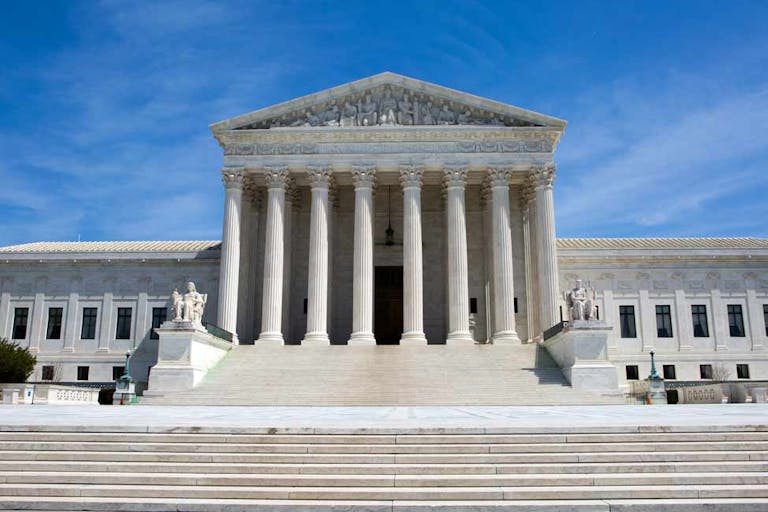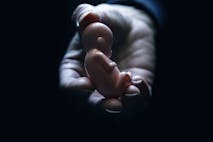
Details shrouded in secrecy as third woman in a month is injured at Rhode Island Planned Parenthood
Bridget Sielicki
·
Some said Planned Parenthood v. Casey settled the abortion conversation. They were wrong.
Disclaimer: The opinions expressed in this guest post are solely those of the author and are not necessarily reflective of Live Action or Live Action News.
This week, the Supreme Court heard oral arguments in the case known as Dobbs v. Jackson Women’s Health Organization. It is a pivotal abortion case that is perhaps the greatest chance in a generation of seeing Roe v. Wade overturned. While most people associate abortion with Roe, there is another case that was nearly as significant. Understanding the facts around it is beneficial for understanding the current state of abortion jurisprudence.
In 1992 the Supreme Court decided Planned Parenthood of Southeastern Pennsylvania v. Casey in a 5-4 decision in what has become the most important abortion case since Roe v. Wade (1). The case upheld much of the 1973 Roe decision but allowed states to place legal restrictions on abortion. Justice Anthony Kennedy voted with the majority in this case and was a critical swing vote that nearly voted with the other side of the court (2). On June 27, 2018, Justice Kennedy announced that he would retire from the Supreme Court on July 31, 2018 (3). Planned Parenthood v. Casey has only grown in importance since this decision was handed down over a quarter century ago.
The case before the court examined the validity of the Pennsylvania Abortion Control Act of 1982. It was argued that this law put an undue burden on a woman’s right to receive an abortion. Four of the provisions in this law were being challenged and they were: notification of the spouse, information disclosure, parental consent for minors, and a 24-hour waiting period (4).
This case also erased the trimester framework from Roe v. Wade and instead implemented the concept of viability — the point where a fetus is able to live outside of the womb (5). The majority declared a “recognition of a woman’s right to choose to have an abortion before fetal viability and to obtain it without undue interference from the State, whose pre-viability interests are not strong enough to support an abortion prohibition or the imposition of substantial obstacles to the woman’s effective right to elect the procedure” (6).
Article continues below
Dear Reader,
In 2026, Live Action is heading straight where the battle is fiercest: college campuses.
We have a bold initiative to establish 100 Live Action campus chapters within the next year, and your partnership will make it a success!
Your support today will help train and equip young leaders, bring Live Action’s educational content into academic environments, host on-campus events and debates, and empower students to challenge the pro-abortion status quo with truth and compassion.
Invest in pro-life grassroots outreach and cultural formation with your DOUBLED year-end gift!
Thus, in the Casey decision, the court grounds the litmus test for the morality of abortion in whether or not a fetus is viable. Before this point, states cannot prohibit abortion. There is, however, no consensus of when viability occurs. When Roe was handed down, it was believed this was during the 28th week, but medical advances have pushed this to even before 24 weeks now (7). Nineteen states have laws banning abortion as early as 20 weeks but this is believed to be unconstitutional under current law and these laws do draw legal challenges, as two circuit courts have overruled 20 abortion bans (8).
The court handed down its 5-4 decision on June 29, 1992. In addition to reaffirming the central holding of Roe, the court enacted the idea of “undue burden” saying that while states had the right to restrict abortion once viability had been reached, states could not place a burden on the woman that would unreasonably restrict her ability to have an abortion (9). The decision also propelled women’s rights to the forefront in a way that the Roe decision had not done. The court said, “The liberty of the woman is at stake in a sense unique to the human condition, and so, unique to the law.” (10) They continue, “Her suffering is too intimate and personal for the State to insist, without more, upon its own vision of the woman’s role, however dominant that vision has been in the course of our history and our culture. The destiny of the woman must be shaped to a large extent on her own conception of her spiritual imperatives and her place in society.” (11)
The reaction to the Supreme Court’s decision was mixed. It appeared as if the court was set to overturn the Roe v. Wade decision and yet, it upheld it. Those who believed that it would be overturned were devastated but many abortion rights advocates considered the ruling to be a “disaster” as the ruling gave allowances for how the procedure could be legally restricted (12). It is not an exaggeration to see this decision as vindication for Roe. The central holding of that 1973 decision was upheld. Some went so far as to say that Casey settled the abortion conversation in this country.
Those believing this in 1992 were mistaken. The abortion debate has reached a fever-pitch in recent years and many on the pro-choice side are nervous about the Dobbs decision as it is, perhaps, the best chance there has ever been at overturning Roe. Those in the pro-life camp, while familiar with bitter disappointment, are hopeful that this is the moment that the great human rights crisis of our time will be cast onto the ash heap of history.
Live Action News is pro-life news and commentary from a pro-life perspective.
Contact editor@liveaction.org for questions, corrections, or if you are seeking permission to reprint any Live Action News content.
Guest Articles: To submit a guest article to Live Action News, email editor@liveaction.org with an attached Word document of 800-1000 words. Please also attach any photos relevant to your submission if applicable. If your submission is accepted for publication, you will be notified within three weeks. Guest articles are not compensated (see our Open License Agreement). Thank you for your interest in Live Action News!

Bridget Sielicki
·
Analysis
Cassy Cooke
·
Analysis
Cassy Cooke
·
Analysis
Cassy Cooke
·
Analysis
Cassy Cooke
·
Analysis
Nancy Flanders
·